SEXUAL EXCITEMENT Dynamics of Erotic Life
Also by the Author
Sex and Gender, Volume I: On the Development of Masculinity and Femininity
Splitting: A Case of Female Masculinity
Sex and Gender, Volume II: The Transsexual Experiment
Perversion: The Erotic Form of Hatred
_ SEXUAL _ EXCITEMENT
Dynamics of Erotic Life
Robert J. Stoller, M.D.
MARESFIELD LIBRARY LONDON
Copyright 1979 by Robert J. Stoller, M.D.
All rights reserved under International and Pan-American Copyright Conventions. Published in the United States by Pantheon Books, a division of Random House, Inc., New York, and simultaneously in Canada by Random House of Canada Limited, Toronto.
This edition published 1986 bv Karnac Books Ltd.
118 Finchley Road, NW3 5 HT
by arrangement with Pantheon Books, a division of Random House Inc.
ISBN 978094643 9218
Since this copyright page cannot accommodate all acknowledgments, they are to be found on the following pages.
Printed in Great Britain by BPC Wheatons Ltd, Exeter
I wish to acknowledge and thank the following for permission to use portions of my previously published material:
The American Medical Association: For Sexual Excitement, by Robert J. Stoller, M.D., from Archives of General Psychiatry 33 (1976) 899-909. Copyright 1970 by the American Medical Association.
The American Psychoanalytic Association: For Primary Femininity, by Robert J. Stoller, M.D., from Journal of the American Psychoanalytic Association 24 (1976): 59-78. Copyright 1976 by the American Psychoanalytic Association.
Femininity in Females, by Robert J. Stoller, M.D., in Women in Context: Development and Stresses, ed. M. Horner, M. Kirkpatrick, et al. (New York: Plenum Publishing Corporation, in press).
Grateful acknowledgment is also made to the following for permission to reprint previously published material:
Basic Books, Inc., Publishers: Excerpts from Human Sexuality: Research and Treatment Frontiers by Richard Green, in The American Handbook of Psychiatry, 2nd ed., vol. 6, ed. Sylvano Arieti. Copyright 1975 by Basic Books, Inc.
Basic Books, Inc., Publishers, and Routledge & Kegan Paul Ltd.: Excerpts from An Object-Relations Theory of the Personality by W. R. D. Fairbairn. Copyright 1952 by William Ronald Dodds Fairbairn.
Farrar, Straus & Giroux, Inc.: Excerpts from Masochism in Modern Man, by Theodor Reik. Copyright 1941 by Theodor Reik. Renewal Copyright 1969 by Theodor Reik, Margaret H. Beigel and Gertrud M. Kurth.
Heinz Lichtenstein, M.D.: Excerpts from Identity and Sexuality, Journal of the American Psychoanalytic Association 9 (1961 ) : 179-260.
The Menninger Foundation: Excerpt from On Moods and Introjects by R. R. Greenson, Bulletin of the Menninger Clinic 18 (1954): 10. Copyright 1954, The Menninger Foundation. Excerpt from A Short History of the British School of Object Relations and Ego Psychology by A. M. Mendez and H. J. Fine, Bulletin of the Menninger Clinic 40 (1976) : 358. Copyright 1976, The Menninger Foundation. Excerpt from What Splits in Splitting? by P. W. Pruyser, Bulletin of the Menninger Clinic 39 (1975): 19-19. Copyright 1975, The Menninger Foundation.
The New Yorker: Quotation from Marcel Duchamp from the article Not Seen and/or Less Seen by Calvin Tomkins, The New Yorker, February 6, 1965.
W. W. Norton & Co., Inc., and The Hogarth Press Ltd.: Excerpts from The Language of Psychoanalysis by J. LaPlanche and J.-B. Pontalis, trans. by Donald Nicolson-Smith, 1974.
Philosophical Library, Inc.: Excerpts from Being and Nothingness by Jean-Paul Sartre. Copyright 1956 by the Philosophical Library, Inc.
Psychoanalytic Quarterly: Excerpts from An Unusual Fantasy in a Twin with an Inquiry into the Nature of Fantasy by E. D. Joseph, Psychoanalytic Quarterly, 28 (1959): 189-90.
Simon & Schuster: Excerpts from My Secret Garden by Nancy Friday (New York: Trident Press). Copyright 1973 by Nancy Friday.
Charles C. Thomas, Publisher: Excerpt from Sexual Attraction and Love by Richard Centers ( 1975).
Yale University Press: Excerpts from Freud and Philosophy by Paul Ricoeur. Copyright 1970.
Contents
Acknowledgments ix Introduction xi
PART 1 Hypotheses on Sexuality
1 Sexual Excitement 3
2 Primary Femininity 36
PART2 Data: Belle
3 Case Summary 59
4 The Erotic Daydream 68
5 The Underground Fantasy 88
6 Anality 92
7 Sadomasochism 113
8 Exhibitionism 130
9 Lovely 149
PART 3 Theories of the Mind
10 Microdots 165
11 Who Is Belle? 176
PART 4 Conclusions
12 Treatment and Research 205
13 Last Thoughts 219
Appendix A 224 Appendix Fixing 235
Abbreviations Used in the Notes 240 Notes 242 Index 273
Acknowledgments
Drs. M. F. Basch, . M. Colby, and W. W. Meissner have generously offered their ideas concerning fundamental problems of psychoanalytic theory and then allowed me to publish them herein. In addition, Dr. Colby has, for untold hours and with benign patience, enthusiasm, humor, and erudition, guided me into the problems and nonanalytic literature concerning the nature and function of consciousness, thinking, motives, intention, and awareness. I would never otherwise have advanced so effectively to the core of my confusion on these issues, or been as alerted also to seeing that confusion in the center of most psychoanalytic thought.
As before, Jean Strouse, with firm intelligence and kindness, has led my writing to greater clarity and preciseness and cooled down some of the extravagances.
Finally, once again I express my debt and gratitude to my secretary, Thelma Guffan, for defending the space in which I work.
Introduction
This is a study of sexual excitement. It is the fifth bookperhaps more accurately, the fifth chapter in one workon masculinity and femininity (gender identity), carrying forward ideas examined in my last book, Perversion . As many have noted since Freud said it decades ago, it is so difficult to draw a line between excitement one can call perverse and normal excitement that the word normal loses definition. The woman to be described in these pages exemplifies that observation, for her life has not been one of disorder and pathology nor her sexual experiences outside the range expected in our society. Only her fantasy life sounds odd, and even that impression weakens in the light of the kinds of daydreams in which most people indulge. This is not to say she is not unique or was not unhappy. She certainly had plenty of experience with anxiety and sadness; and since she caused most of it herself, she was a good candidate for analysis.
One day when she was well into her treatment, she mentioned an erotic daydream in which she was being raped by a horse while a group of silent men watched, the performance controlled by a sadistic Director. I gradually learned that this was by far the dominant scenario for her sexual excitement; by the end of our work together, we knew rather well when and how it was created. Her analysis tests an idea: she condensed into a favorite script the story of her erotic life. This led to a broader hypothesis, laid out long ago by Freud,1 that people in general have a paradigmatic erotic scenarioplayed in a daydream, or in choice of pornography, or in object choice, or simply in actions (such as styles of intercourse)the understanding of which will enable us to understand the person. I shall try to show that the function of daydreams is to state a problem that has been disguised and then to solve it, the problem and the solution being the poles between which excitement flows.
A task necessary for the success of her treatment and for understanding her erotism was to find why, out of all the stories she could have used, she invented this one; why did this plot, and not others, excite her? And since we are trying to understand sexual excitement better, we can also ask why her fantasy would not suit others as it did her.
Next page
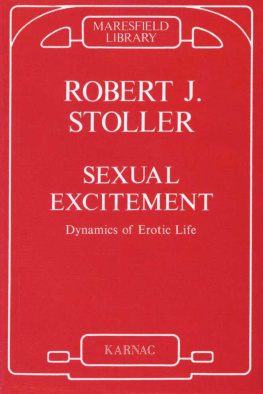
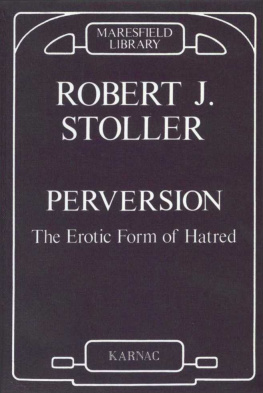
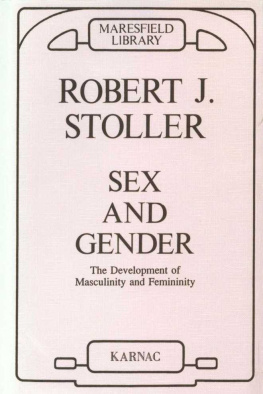

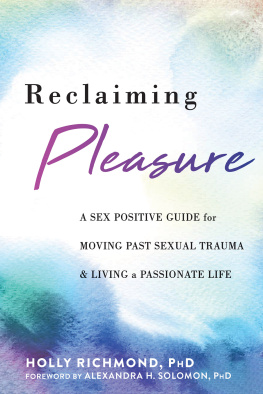

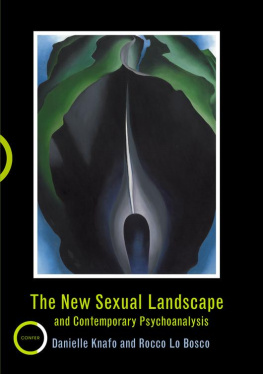
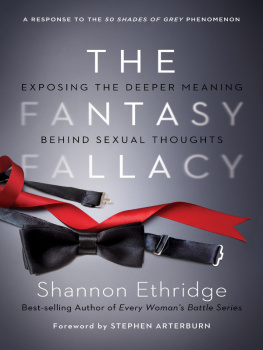

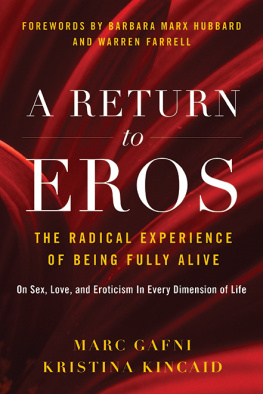
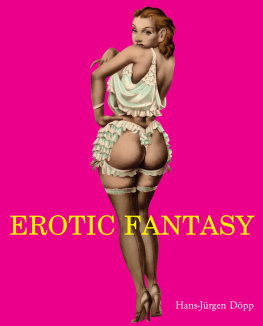
![Advait - Mudras for Sex: 25 Simple Hand Gestures for Extreme Erotic Pleasure & Sexual Vitality: [ Kamasutra of Simple Hand Gestures ]](/uploads/posts/book/81294/thumbs/advait-mudras-for-sex-25-simple-hand-gestures.jpg)